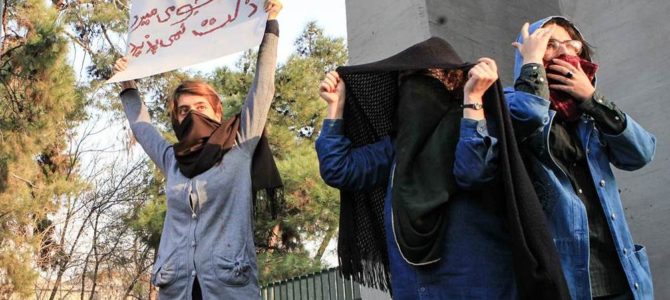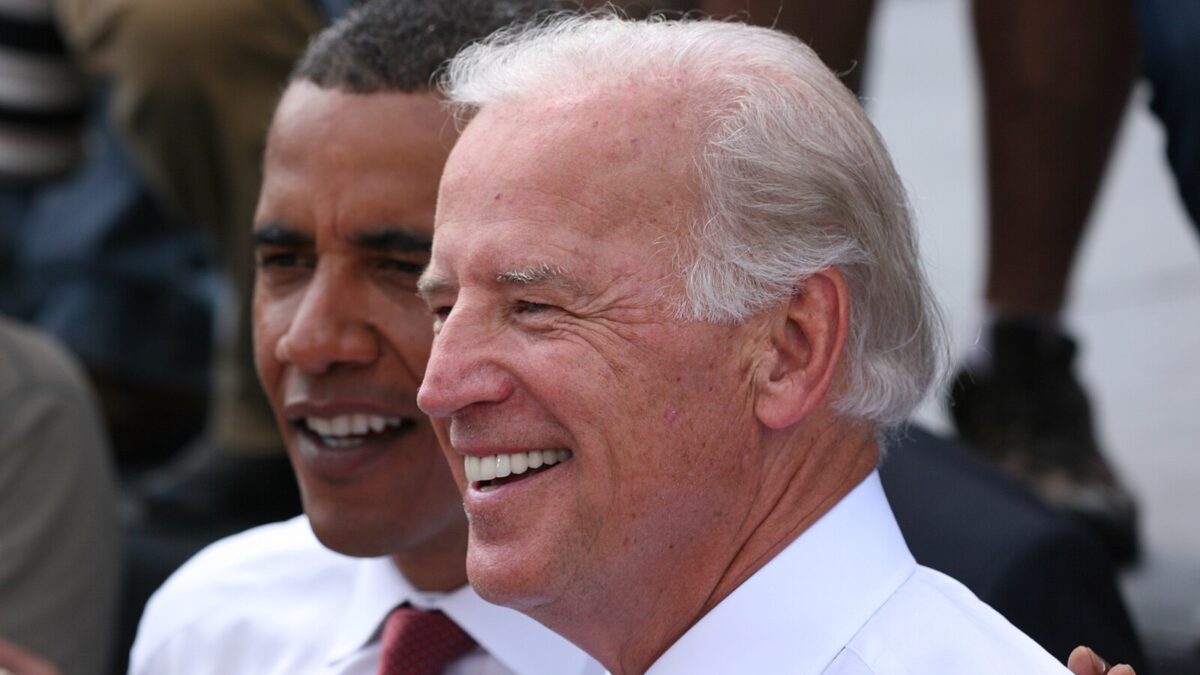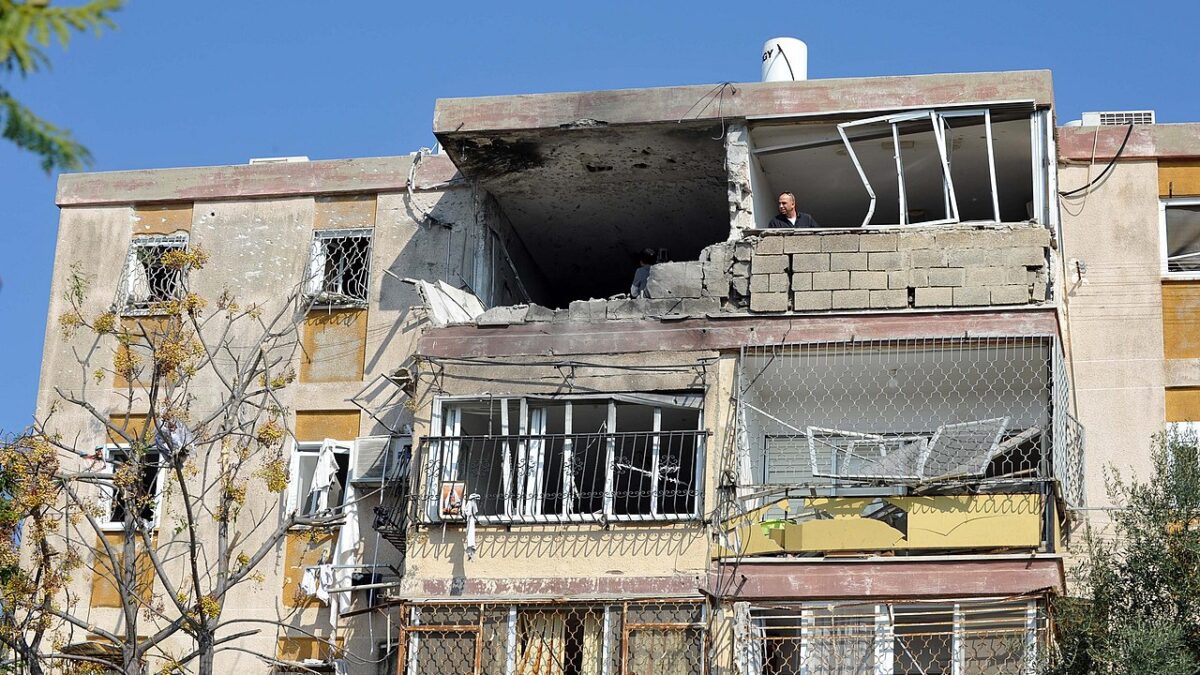
Over the past week, a new wave of anti-regime protests has broken out in Iran, and it could not have happened at a more opportune time. Following the defeat of ISIS in Syria, this gives America the clearest shot we have had in a long time at helping the Iranian people take down a dangerous and oppressive dictatorship. Please, please, please let’s not mess this up.
I describe this as a “clear shot,” because this is not the first time the Iranian people have risen up against their rulers. But each time it has happened before, America has seemed too distracted or blinded to do much about it.
The Islamic Republic—which is not a republic but a theocracy—has been on thin ice for a long time. It has often been observed that Iran was a rapidly modernizing and relatively liberal country before the Islamic Revolution in 1979, which in a way explains the revolution, as a backlash against all that modernity. But by the same token, the Iranian people have always chafed under the restrictions imposed by the mullahs, and have been trying to undo the Islamic takeover ever since, whenever public dissatisfaction reaches a boiling point.
Since the end of the Iran-Iraq War, mass protests have broken out every ten years or so. They flared up for a while in 1999 and into the early 2000s, but we were too absorbed by our conflicts with Iraq—which were not invented by George W. Bush but simmered throughout the 1990s—and by 9/11, in which Iran was not directly involved, so we had no casus belli for focusing our attention on that regime.
Bush believed that creating a successful democracy in Iraq would help undermine the Iranian regime, but by the time the Iranian uprising came in 2009, the Obama administration had decided to always do the opposite of the Bush administration. They were so intent on cozying up to the regime and striking a diplomatic bargain that they pointedly ignored the Green Revolution. Then they got distracted by the civil war in Syria and the rise of ISIS. This is undoubtedly one of the reasons the Iranian regime likes to light fires across the Middle East: to keep everyone’s attention tied up elsewhere.
Yet the underlying causes of the dissatisfaction with Iran’s rulers didn’t go away. An oppressive regime is constantly producing new reasons for the people to hate it, from arbitrary restrictions on their behavior, to the predatory kleptocracy of regime insiders, to massive official corruption and incompetence, to squandering the people’s wealth and sustenance in military adventures that serve the regime’s goals but have no compelling connection to the national interest. All of these are themes expressed by the current protesters—particularly the money Iran has spent to prop up the Assad regime in Syria while cratering the economy back home.
This indicates the big overlap between the protests in Iran and American interests. The Islamic Republic is a notorious state sponsor of terrorism that constantly tries to export its revolution, supports anyone who hates America, and has built a network of proxies and satellites throughout the Middle East. Currently, the sphere of Iranian influence goes through Iraq, where Iran supports and controls Shiite militias; to Syria, where it has provided so much support to the Assad regime that some are calling it an Iranian takeover of Syria; to Lebanon, where Iran is the main sponsor of the Shiite state-within-a-state run by Hezbollah, which it is currently trying to whip up into a new war against Israel.
In response—and in the absence of any substantial American leadership during the Obama administration—Saudi Arabia has been trying to gather together Arab and Sunni forces in a kind of Cold War against Iran, including a possible nuclear arms race. I don’t think I have to explain to you why this is not a good thing.
I have pointed several times to a startling graph showing how the number and deadliness of wars across the world dropped off precipitously after the collapse of the Soviet Union, revealing the degree to which Communism was an engine of conflict. (We American warmongers were still around and stronger than ever, yet strangely we failed to keep all of the wars going.) The Iranian regime is a similar engine of conflict, if on a smaller scale. Imagine the peace dividend that could follow from its fall.
Better yet, this new uprising comes at a time when ISIS has been defeated and its foreign fighters have gone underground. There will be hell to pay when they get back to their home countries, but for now there is a lull. There is nothing to distract us from supporting the Iranian protesters and helping them topple the regime.
Unless, of course, we distract ourselves. President Trump started, well, using Twitter—appropriate in this case, given the role of social media in Iran’s protests—to proclaim his support for the uprising.
Iran is failing at every level despite the terrible deal made with them by the Obama Administration. The great Iranian people have been repressed for many years. They are hungry for food & for freedom. Along with human rights, the wealth of Iran is being looted. TIME FOR CHANGE!
— Donald J. Trump (@realDonaldTrump) January 1, 2018
Big protests in Iran. The people are finally getting wise as to how their money and wealth is being stolen and squandered on terrorism. Looks like they will not take it any longer. The USA is watching very closely for human rights violations!
— Donald J. Trump (@realDonaldTrump) December 31, 2017
The people of Iran are finally acting against the brutal and corrupt Iranian regime. All of the money that President Obama so foolishly gave them went into terrorism and into their “pockets.” The people have little food, big inflation and no human rights. The U.S. is watching!
— Donald J. Trump (@realDonaldTrump) January 2, 2018
Just as the Obama administration was obsessed with doing the opposite of the Bush administration, so Trump is strongly motivated to do anything that is the opposite of Obama. In this case, that’s a pretty good rule of thumb. So far, Obama-era CIA Director John Brennan has harshly criticized Trump’s approach, which is the best endorsement he could hope for.
But our mercurial commander-in-chief has since become distracted again. When North Korean dictatorship Kim Jong-Un made an indirect nuclear threat against the United States, which happens every other Tuesday, Trump took the bait and responded by boasting about the size of his button.
North Korean Leader Kim Jong Un just stated that the “Nuclear Button is on his desk at all times.” Will someone from his depleted and food starved regime please inform him that I too have a Nuclear Button, but it is a much bigger & more powerful one than his, and my Button works!
— Donald J. Trump (@realDonaldTrump) January 3, 2018
In fact, the likelihood of war on the Korean peninsula has been decreasing lately. For the Kim regime, rattling the saber is also their way of rattling the tin can, angling for financial support from South Korea, China, or the United States. It’s their shtick. But Trump can’t resist a petulant battle of boasts, so he has to go chase that squirrel.
We can only hope that the administration’s response to the uprising in Iran will follow the same pattern as our war against ISIS, which we quietly won while the president was tweeting about other things. We won against ISIS because we had competent strategists in top national security positions who were focused on the issue and not distracted, even by their own commander in chief. Let’s hope they can maintain their focus on Iran, too, because there are a lot of things the United States can do.
One of the measures, as Eli Lake points out, is to publicize the names of dissidents and protesters who are arrested, and to make all Western relations with Iran—both diplomatic and economic—dependent on their treatment. “The model here is the late-Cold War diplomacy with the Soviet Union, when US envoys made the treatment of dissidents there a feature of every other encounter with this dictatorship of the proletariat.” To the extent that the West can use this kind of publicity to shield dissidents from the worst forms of retaliation, we can help break down the Iranian people’s fear of the regime.
Helen Raleigh provides some more substantive suggestions, including giving protesters and dissidents material support, whether overtly or covertly, particularly focusing on technology that will help them communicate and get around the regime’s crackdown on the Internet, social media, and messaging apps. In effect, we should do for the Iranian opposition what we did for the Solidarity movement in Poland in 1980—and on the same time scale, if necessary.
It is also time to seize the assets of regime officials and supporters. The latest wave of protests began after the Obama administration gave Iran $100 billion in frozen assets as part of the failed nuclear weapons deal, and that money promptly disappeared into Iran’s foreign adventures and a vast morass of official corruption. The Iranian people noticed, and so should we. It’s time to take back as much Iranian money as we can get our hands on and seal off the regime and its supporters from the international banking system and the international economy.
Finally, we need to recognize that this is only the beginning of a long process. A few tweets won’t do the job. If their role in Syria is any guide, the Iranian regime isn’t going down without a bloody fight, even if they have to go to war against their own people. Get ready to back a new Iranian revolution with arms, training, intelligence, and even air support—or sit back and watch the Middle East collapse into chaos on a scale bigger than the disaster in Syria.
It may take years. It may take more focus than the president has shown so far. It will certainly require vigorous, careful, patient effort on the part of this administration’s top strategists. It will also require this administration to very prominently undermine the interests of Russia, which has adopted Iran and its Syrian satellite as the center of its sphere of influence in the Middle East. But the rewards are enormous.
It’s not often you get a chance to undermine, not just the power of your enemies, but their entire ideology and model of government. That’s what is at stake here. The young, reform-minded Saudi crown prince who has been consolidating his power put it this way recently:
After the Iranian revolution in 1979, people wanted to copy this model in different countries, one of them is Saudi Arabia. We didn’t know how to deal with it. And the problem spread all over the world. Now is the time to get rid of it. We are simply reverting to what we followed—a moderate Islam open to the world and all religions. Seventy percent of the Saudis are younger than 30. Honestly, we won’t waste 30 years of our life combating extremist thoughts, we will destroy them now and immediately.
This is exactly the sentiment being echoed by Iranian protesters who are denouncing the Islamic regime and demanding a secular government. Now imagine what the Middle East might look like if the big regional rivalry between Saudi Arabia and Iran is over which country can be more modern, secular, and liberal.
Maybe it’s a long shot, but so was the Reagan administration’s effort to undermine the Soviet Union. It’s definitely worth a serious effort, if we don’t let ourselves get distracted.
Follow Robert on Twitter.









